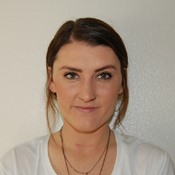Program Information
Comparison of Two Immobilization Systems' Stability Capabilities On SBRT Lung Patients
C Page*, E Dellit , D Ryan , T Mitin , C Thomas , J Tanyi , Oregon Health & Science University, Portland, Oregon
Presentations
SU-I-GPD-T-77 (Sunday, July 30, 2017) 3:00 PM - 6:00 PM Room: Exhibit Hall
Purpose: In a preliminary study that analyzed which immobilization device produced the largest alignment deviation using cone beam CT (CBCT), it was found that patients in a BodyFIX system required shifts up to four times greater than that of patients in a Vac-Lok system. We now seek to compare BodyFIX and Vac-Lok immobilization systems in regards to patient stability on stereotactic body radiation therapy (SBRT) lung patients.
Methods: In lung SBRT, the variability of intrafractional target motion can contradict the potential benefits of four-dimensional treatment planning that serves to account for the dosimetric impacts of body motion. Immobilization systems, specifically BodyFIX and Vac-Lok were chosen for each patient on the day of CT simulation. On the day of treatment, patients underwent routine alignment and setup methods, however, once the beam was turned on, body motion was monitored with VisionRT which uses the body structure contour from planning and infrared light to produce a continuous log of data. The continuous data on patient motion provides information that would be lost by a simply taking a CBCT before and after treatment.
Results: VisionRT provides data points over eight positional directions (translation, vertical, longitudinal, lateral, rotation, roll, pitch, and amplitude). Direct comparison of patient stability between BodyFIX and Vac-Lok can therefore be analyzed over all eight groups of data individually. We have interest is making these discrete comparisons and come to a conclusion involving twenty patients.
Conclusion: Radiation therapy requires submillimeter precision especially in SBRT cases where field sizes are much smaller than normal external beam treatment. The findings of this study will allow us to treat patients with higher confidence in those small fields.
Contact Email:
